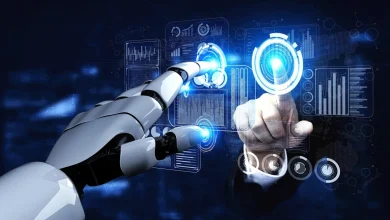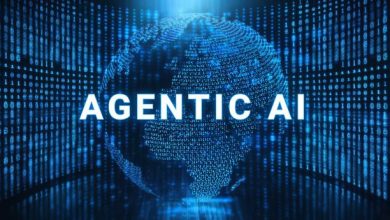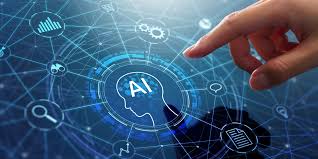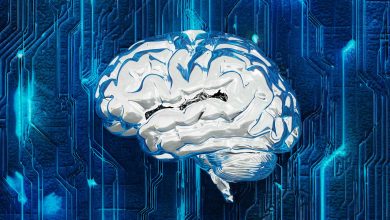Artificial intelligence has quietly moved from the background of our workflows to the center of our creative processes. AI tools can now compose music, design websites, write marketing copy, generate code, and even replicate voices. As the boundary between human and machine creativity continues to blur, the question becomes increasingly urgent: When machines create, what happens to authenticity?
For business leaders and creators alike, the challenge isn’t just about capability-it’s about identity. Automation can produce remarkable outputs, but at what cost to originality, trust, and meaning? The more we hand over creative control to algorithms, the more we risk diluting the emotional depth and human touch that make creativity valuable in the first place.
This article explores the delicate balance between automation and authenticity in digital creation-from content to design-and why businesses should seek a middle path that combines the efficiency of machines with the empathy of humans.
The Promise of Automation
Automation’s appeal is obvious. AI systems don’t tire, second-guess, or get stuck in creative blocks. They can generate thousands of layout variations, run A/B tests at scale, and instantly produce assets that once required entire design teams. For many organizations, automation translates directly to cost reduction, scalability, and speed.
In marketing, AI content generators have replaced human copywriters for bulk article production. In art and music, generative algorithms can produce endless variations of visual and auditory themes. In design, AI-driven builders are making websites that adapt themselves dynamically to user preferences, reducing the need for custom coding.
Automation delivers:
- Consistency: Machines follow patterns perfectly, creating predictable quality across deliverables.
- Efficiency: Work that once took days now happens in minutes.
- Scalability: AI enables organizations to meet massive content or design demands effortlessly.
- Accessibility: Non-designers can now produce passable creative work without specialized skills.
In short, automation democratizes creation. It has lowered barriers to entry, giving every startup and freelancer access to tools that mimic the capabilities of large creative agencies. But with that democratization comes a new risk-the flattening of creativity itself.
The Cost of Convenience
Automation has an undeniable shadow side. When efficiency becomes the top priority, creative expression can start to lose its soul. Automated content and design tend to converge toward sameness because AI models are trained on preexisting data. They don’t innovate; they interpolate.
We see this everywhere-from stock-photo-style imagery to formulaic blog content to websites that look and feel nearly identical. This homogeneity might not seem problematic at first, but it creates a deeper issue: audiences are becoming desensitized to the digital experiences they encounter.
As one recent analysis from IR Global warns, “Over-automation risks undermining the very trust clients place in your authenticity.” The article-“Authenticity over automation: Is your use of AI undermining client trust?”-argues that while automation can enhance productivity, it can also erode emotional credibility when overused. Consumers today crave genuine connection. They can detect whether content or design feels manufactured. And when they do, trust erodes.
This phenomenon isn’t limited to marketing. Across industries, audiences equate authenticity with reliability and empathy. Brands that outsource too much of their voice to machines risk appearing detached or opportunistic. In creative industries, where perception is everything, that’s a high price to pay for convenience.
Why Authenticity Still Matters
Authenticity is more than a marketing buzzword-it’s a cognitive shortcut our brains use to evaluate trust. When we perceive something as authentic, we assume it reflects intent, care, and human involvement.
Psychological studies show that people respond more favorably to art, music, and even social media posts when they believe they were created by humans rather than algorithms. The reason is simple: we value the imperfections that signal effort, emotion, and individuality.
Authenticity also has measurable business value. In a landscape saturated with automation, human originality becomes a differentiator. A handcrafted website, a well-written article, or a thoughtfully designed brand identity conveys far more than information-it signals commitment, taste, and credibility. Those qualities are what transform audiences into loyal customers.
Automation, on the other hand, can only imitate those signals. Its “creativity” is derived from datasets of prior human work, meaning it recombines the familiar rather than inventing the new. That’s why even the most sophisticated AI outputs can feel strangely hollow: technically impressive, but emotionally neutral.
When Machines Create: The Illusion of Creativity
To understand why machines struggle with authenticity, we have to look at how AI “creates.” Artificial intelligence doesn’t truly understand what it’s making. It identifies patterns, predicts probable next steps, and arranges outputs statistically rather than intuitively. There’s no emotion, purpose, or narrative-only data relationships.
In the visual arts, AI can produce stunning results, yet those results are derivative. They rely on countless human-made works to form their structure and style. In writing, language models can simulate tone and rhythm, but they lack lived experience-the underlying intent that gives meaning to words.
What AI offers, then, is the appearance of creativity without its essence. It produces novelty by remixing the known. Humans, conversely, create from context, empathy, and vision. We design not just to generate output but to solve problems, express identity, and communicate emotion.
This distinction explains why human-led creative work continues to outperform automation when it comes to long-term brand growth. AI can build the frame; humans fill it with meaning.
Web Design as a Case Study in Authenticity
One of the clearest places to see this balance play out is in web design. AI builders can now spin up polished, functional websites in minutes. They choose templates, color schemes, and typography combinations based on algorithms trained on successful patterns. For small projects, that’s revolutionary.
But for businesses that rely on differentiation, automation often isn’t enough. A generic AI-generated website might function smoothly but lack the emotional resonance or strategic thought that encourages users to trust, explore, and engage.
This is where human-crafted design remains irreplaceable. In professional web design, strategy and creativity still define quality. For instance, agencies like Mendel Sites blend design psychology and storytelling to build digital experiences that feel personal and enduring-showing how thoughtful human direction can elevate even AI-assisted projects.
That’s the ideal relationship between machines and makers: one amplifies, the other defines.
The Hybrid Future: Human and Machine in Harmony
The future of creative industries isn’t an either-or scenario. It’s both: automation for speed, humans for significance.
In practice, that means leveraging AI for what it does best-repetition, optimization, pattern recognition-while reserving human talent for conceptual thinking, emotional intelligence, and ethical judgment. The two can work together seamlessly if each is allowed to do what it’s best at.
Consider a hybrid workflow in digital creation:
- AI Ideation: Machine tools generate initial concepts, analyze competitors, or produce quick design drafts.
- Human Refinement: Designers and writers select, interpret, and reshape outputs based on strategy and brand personality.
- Machine Optimization: AI tests variations for performance and accessibility.
- Human Oversight: Final review ensures emotional tone, authenticity, and narrative cohesion.
This partnership offers the best of both worlds: the efficiency of automation and the emotional richness of human creativity. It’s a model that doesn’t just save time-it elevates quality.
The Ethical Edge of Authenticity
As AI grows more capable, authenticity becomes not just an aesthetic concern but an ethical one. When machines produce art, copy, or code, transparency about their involvement matters. Users deserve to know whether they’re engaging with a human or an algorithm.
Companies that obscure their use of automation risk public backlash once the illusion is revealed. Transparency builds credibility; deception erodes it. This is why ethical design practices emphasize disclosure, consent, and accountability.
At the same time, we shouldn’t demonize automation. Used responsibly, it can enhance human creativity by handling the mechanical aspects of production, freeing designers and writers to focus on innovation. The challenge lies in maintaining honesty and intentionality-ensuring automation serves creativity rather than hollowing it out.
Measuring Authenticity in a Machine Age
One of the emerging questions in the creative AI debate is whether authenticity can be quantified. While it’s difficult to measure emotional impact, businesses can look at tangible indicators:
- Engagement quality: Are users spending time, interacting meaningfully, and sharing content?
- Brand differentiation: Does your work stand out visually and conceptually, or blend into industry sameness?
- Customer feedback: Are audiences describing your brand as “genuine,” “human,” or “personal”?
- Consistency of voice: Does content sound like it was written by a cohesive team, or stitched together by machines?
Authenticity isn’t a static trait; it’s a perception. Maintaining it requires ongoing human involvement-regular content reviews, creative iteration, and brand storytelling that evolves beyond algorithmic logic.
Lessons from Other Creative Fields
The tension between authenticity and automation isn’t unique to digital design. It’s echoed across music, art, writing, and even academic research.
- Music: AI can now compose tracks indistinguishable from human musicians. Yet listeners report greater emotional resonance when they believe a song was written by a person.
- Art: Generative image models have sparked debate about authorship and originality. The “AI art” movement raises new questions about intellectual property and emotional value.
- Writing: In publishing, AI tools assist authors in editing and ideation, but readers still crave the nuance of human storytelling-context, metaphor, and voice.
Across all disciplines, the conclusion is consistent: machines excel at output; humans excel at meaning.
Finding the Balance for Businesses
For most organizations, the practical challenge is determining where to draw the line. How much automation is too much? How do you decide when to rely on AI versus when to invest in human expertise?
Here’s a simple framework for finding that balance:
- Assess Purpose: If the goal is speed or mass production (e.g., generating multiple product pages or blog summaries), automation is efficient.
- Evaluate Impact: If the work represents your brand voice, tells your story, or directly affects customer trust, human oversight is essential.
- Blend Strategically: Use AI to support-not replace-your creative professionals. Allow machines to handle tedious tasks so humans can focus on strategy, originality, and authenticity.
- Monitor Continuously: Measure engagement and sentiment to ensure your audience still perceives genuine brand identity.
The brands that thrive in the next decade will not be the ones that automate everything-they’ll be the ones that automate intentionally.
Looking Ahead: The Age of Authentic Intelligence
In the coming years, the conversation will shift from “artificial intelligence” to what might be called authentic intelligence-a fusion of human insight and technological efficiency. The winners of this transition will be creators and companies that understand how to maintain human purpose at the core of every automated system.
We’re already seeing early examples of this mindset. Designers use AI to generate wireframes but customize them manually. Writers use generative models for brainstorming but craft the final narrative themselves. Photographers use AI retouching tools but retain creative direction. These workflows don’t threaten creativity-they amplify it.
As automation becomes more pervasive, audiences will begin to value authenticity even more. Just as handmade goods gained prestige during the industrial revolution, human-made experiences will become the new premium. A future where AI is everywhere will make human creativity more-not less-valuable.
Beyond Code: The Soul of Digital Creativity
Machines can create astonishing things. They can design, compose, and code faster than any human ever could. But speed alone doesn’t equate to substance. The heart of creativity lies not in algorithms, but in awareness-our ability to interpret, feel, and connect.
Automation will continue to shape the creative world, but authenticity will remain its anchor. Businesses that understand this will move beyond efficiency toward resonance. They’ll create experiences that are not just functional, but felt.
So the next time your company automates a process, ask: does this make us faster, or does it make us better? Because the line between automation and authenticity isn’t drawn by technology-it’s drawn by intention.




